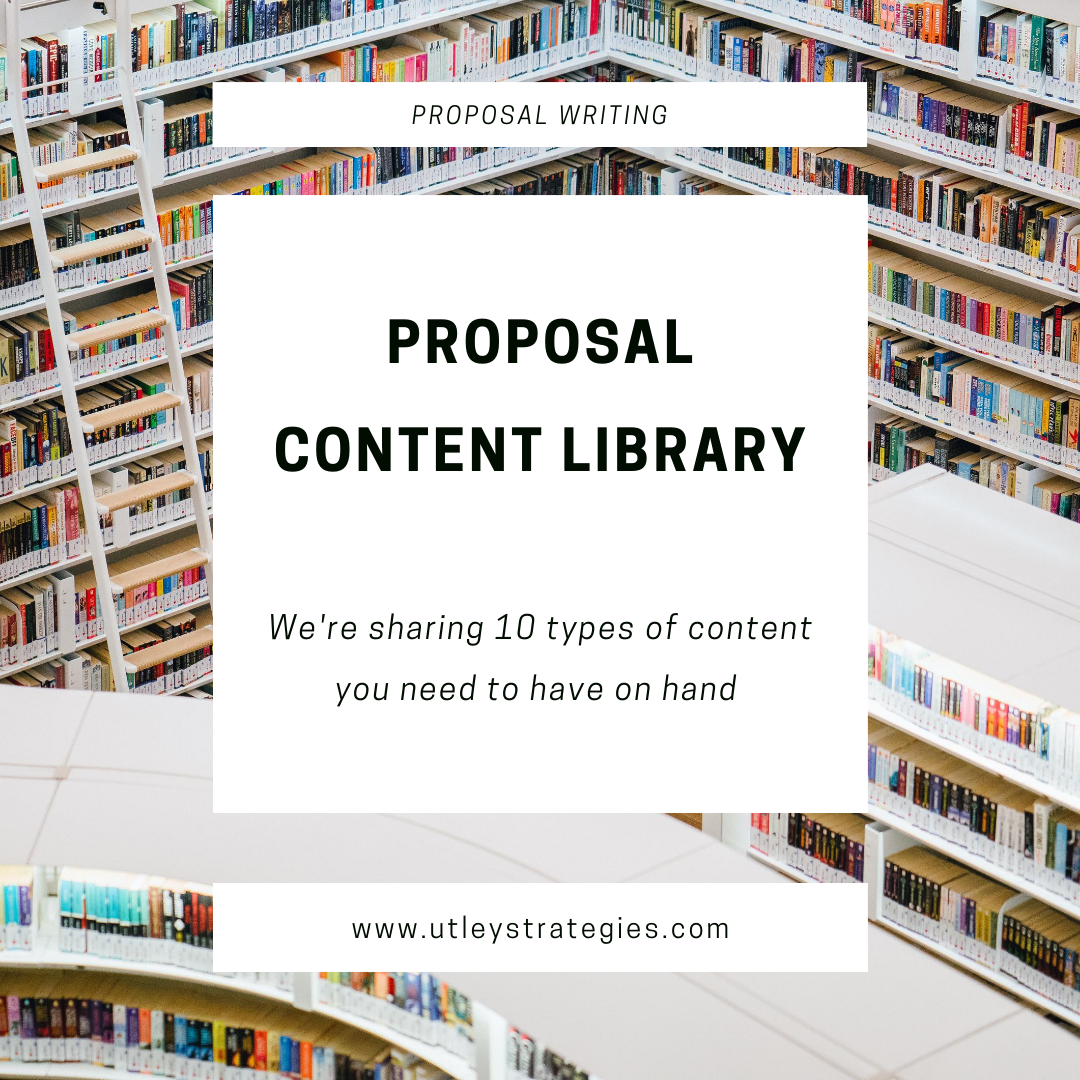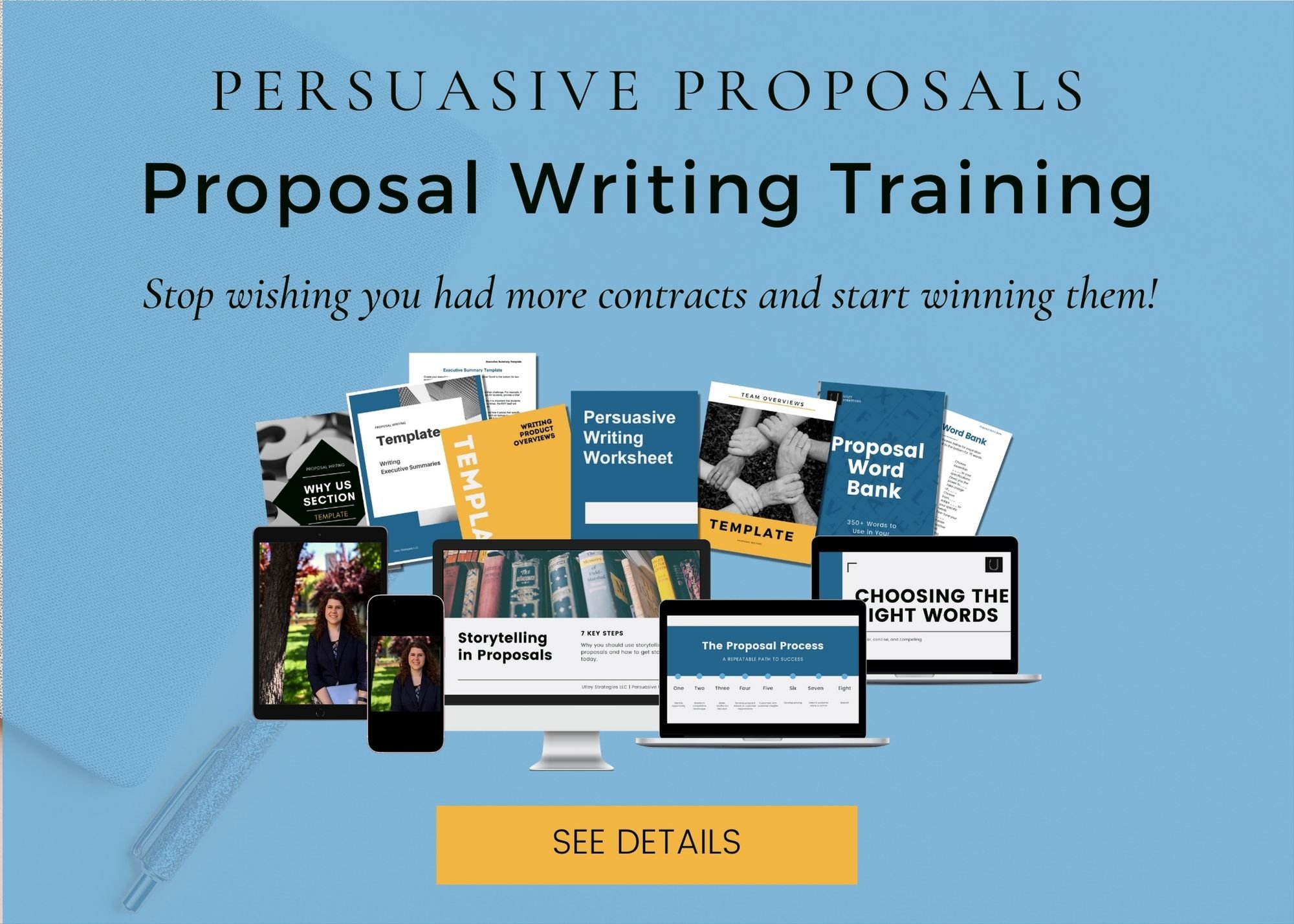10 Types of Proposal Content You Need in Your Library
The hardest part of responding to a proposal is creating all of the required content. By preparing a content library that can easily be tailored for each response, you will save time and be able to focus on customizing for each particular customer. Here are 10 pieces of proposal content that you need in your library.
Company Overview
Almost every proposal will ask for some form of company overview. This is where you describe your company, your key offers, your typical clients, and your objectives. The company overview often occurs near the beginning of the proposal. Use this section to highlight any differentiators from other companies in your space.
Company History
This is very similar to the company overview, but this section should focus on a then-to-now transformation, unless the customer is asking for specific information. Tell an engaging story for why your company was started, the unique challenges you solve, any key successes that have occurred throughout the years, and where you are now. Truly make your founding story engaging. People remember that Google was started in a garage for a reason, and describing your story will stick with your evaluators.
Environmental Initiatives
With the threat of climate change hitting the news every day, more and more companies are focused on trying to reduce their environmental impact. This means that they want to know what you are doing to reduce your impact. Having this content on hand before it is asked will allow you to truly evaluate your impact and identify areas of improvement.
High-Level Organizational Chart
Many companies will ask for an organizational chart either of the specific project team or of your key executives or company structure. Create a template of org charts for project teams to save time during the actual proposal development. If possible, craft an org chart for your executive team or company structure to have on hand for proposals.
Staff/Employee Overview
Whether you’re selling products, cloud-based solutions, or providing services, the potential client will likely want to know why they should trust you to do what you propose. Creating a staff/employee overview will allow you to highlight the expertise and experience of your team. In this section, highlight any certifications, awards, degrees, projects, or other factors that will provide your target customers a sense of security and trust that you will do a good job. If applicable, create mini bios for key team members that you will frequently use in proposals.
Past Experience/Mini Case Studies
Many customers want to know that they aren’t your first client. To reassure them that you are an expert, create a past experience section with mini case studies (as applicable) to highlight your experience. Depending on your offering, you may want to highlight specific experience supporting clients in their industry. Wherever possible, provide hard, concrete statistics to make your case. For example, instead of saying “we have supporting many clients in the healthcare industry”, say “we have supported over 125 healthcare clients in the past eight years.” This shows your level of expertise and instantly makes you more trustworthy.
Implementation Plan
For almost every contract, you will need some sort of implementation plan. If you ship physical products, provide an overview of your ordering process and delivery methods. If you sell SaaS solutions, describe the process for setting up their accounts and what all is needed before they can begin using your solution. For consulting services, describe your approach and process. Your implementation plan should answer the question “what happens after I sign the contract?”
Key Technical Answers
This is particularly important for companies that build physical products or technical solutions. Identify key technical questions that your customers frequently ask and create standard responses for these. Having an easy to follow specification sheet to include in the Appendix will also help customers to understand your offering.
Value Added Benefits
Not every proposal has a value added benefits or “anything else” section, but some do. The value added benefits content should include key differentiators and common themes that you include in all sales pitches and materials. If the proposal doesn’t explicitly ask for this content, this can serve as a starting point for your executive summary. For example, if you have partnerships that allow you to offer overnight shipping for 15% less than your competitors, mention that in this section. Other examples include:
Offering unlimited revisions on designs (or more than is industry standard)
24/7/365 support
Dedicated customer support teamUnique product features
Unique methodology/approach
Answers to Common Form Questions
If you respond to RFPs, you will likely need to complete forms at some point. To save time and headaches, start documenting answers to the questions early in a single document. Common questions include:
Year founded
State incorporated/registered
Official company registration status
Company who audits your financial statements
Number of employees
Company locations
Number of clients supported
MBE/WBE status
Headquarters address
Remit to address
DUNS number (if applicable)
FEIN number
Bonus: Industry-Specific Experience
Once you have your standard content library completed, it’s time to focus on creating content for a specific industry. For example, K-12 clients will want to see your experience working with K-12 customers and an implementation plan that accounts for students, teachers, parents, and administrators. Creating standard content for each industry you serve will allow you to create truly tailored proposals for clients, which will ultimately increase your win rates.
Next Steps
Now that you know what content to create, it’s time to get started! For the best results, keep this in mind:
Make content customizable for each proposal. This means creating placeholders for the client’s name, their specific needs, and similar factors.
Avoid industry jargon. Your boilerplate content should speak to all evaluators, not just those who are intimately familiar with your offering. Create content that can be understood by everyone.
Start sooner rather than later. You never know when you’ll be asked to submit a proposal, and having the content on hand will save you time and stress.
Ask for help. If you need help creating your proposal content library, we can help!



